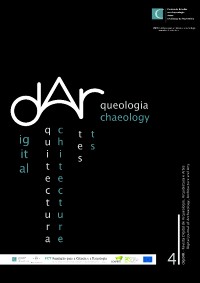Please use this identifier to cite or link to this item:
https://hdl.handle.net/10316.2/43056| Title: | Estudio de pátinas procedentes de hornos de fundición en la Real Fábrica de Artillería de Sevilla (s. XVII) | Other Titles: | Study of patinas from foundry ovens in the Royal Artillery Factory of Seville (XVII century) | Authors: | Flores-Alés, V. Alejandre, J. Martín del Rio, J. J. Blasco-López, F. J. Núñez, C. |
Keywords: | patinas;fundición;metales pesados;Fábrica de Artillería de Sevilla;patinas;foundry;heavy metals;Royal Artillery Factory of Seville | Issue Date: | 2017 | Publisher: | Imprensa da Universidade de Coimbra | Abstract: | The main objective of the present work is to determine the structure of the strata composing the coating of the walls in the areas identified in the Seville Artillery Factory as “old foundry” and “new foundry” and perform the chemical characterization of the same with the specific purpose of identifying the possible metallic deposits that could have accumulated during the factory foundry activity carried out in the building from the end of the 16th century until the XX (Sobrino 2011). It should be noted that the painting of the walls has successively hid the possible patinas; hence the stratigraphic series accumulated over time corresponds to an alternate sequence (Barbero, 2013).
The samples were initially evaluated by optical microscopy to determine the existing strata. By means of X-ray microfluorescence and electron microscopy, the particles containing metals were identified and their chemical composition determined (Berthold, 2009). This analysis confirmed the hypothesis of the presence of heavy metal elements, especially the presence of iron, and also in the different samples, in minor proportions, although relevant (copper, zinc and, in isolated cases, lead and nickel). All of them respond to their possible presence in the materials used in the foundry. El objeto principal del presente trabajo es determinar la estructura de los estratos que componen el revestimiento del paramento de las zonas identificadas en la Fábrica de Artillería de Sevilla como “fundición vieja” y “fundición nueva” y realizar la caracterización química de los mismos con la finalidad concreta de identificar los posibles depósitos metálicos que pudieran haberse acumulado durante la actividad fabril de fundición llevada a cabo en el edificio desde finales del siglo XVI hasta el XX (Sobrino 2011). Hay que señalar que las posibles pátinas han sido sucesivamente ocultadas mediante el pintado de los paramentos, de ahí que la serie estratigráfica acumulada a lo largo del tiempo corresponda a una secuencia alterna (Barbero, 2013). Las muestras fueron evaluadas inicialmente mediante microscopía óptica para la determinación de los estratos existentes. Mediante microfluorescencia de rayos X y microscopía electrónica se identificaron las partículas que contenían metales y se determinó su composición química (Berthold, 2009). Este análisis confirmó la hipótesis de la presencia de elementos metálicos pesados, destacando especialmente la presencia de hierro, habiéndose detectado también en las distintas muestras en proporciones minoritarias, aunque relevantes (cobre, cinc y, en casos aislados, plomo y níquel). Todos ellos responden a su posible presencia en los materiales utilizados en la fundición. |
URI: | https://hdl.handle.net/10316.2/43056 | ISSN: | 2182-844X (PDF) | DOI: | 10.14195/2182-844X_4_9 | Rights: | open access |
| Appears in Collections: | digitAR: Revista Digital de Arqueologia, Arquitectura e Artes |
Files in This Item:
| File | Description | Size | Format | |
|---|---|---|---|---|
| estudio_de_patinas_procedentes_de_hornos_de_fundicion_en_la_real_fabrica_de_artilleria_de_sevilla__s.xvii_.pdf | 2.07 MB | Adobe PDF |  |
Items in DSpace are protected by copyright, with all rights reserved, unless otherwise indicated.
